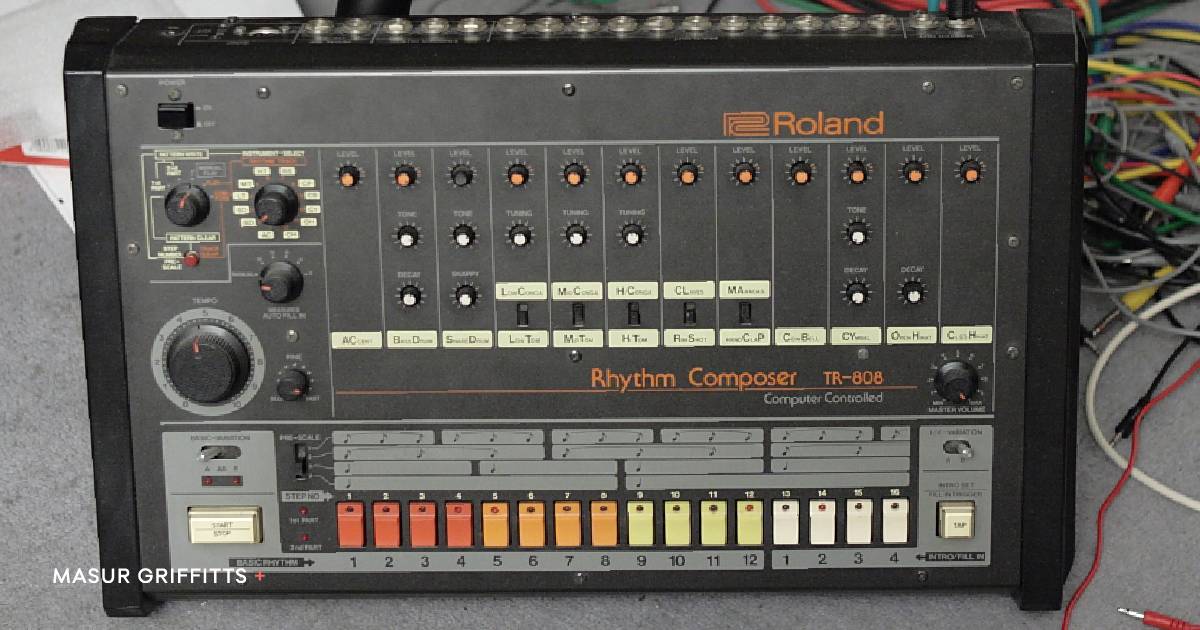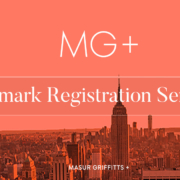Can Roland Claim Trade Dress Protection for its TB-303 and TR-808 Designs?
By: Lauren Mack and Sasha Safavi
Roland, an electronic musical instrument manufacturer, recently registered with the German Patent and Trademark Office the design used in two of their signature products – the TB-303 synthesizer and TR-808 drum machine. Commonly referred to as an “808”, the Roland TR-808 Rhythm Composer was one of the first drum machines to allow rhythms to be programmed into it (rather than only allowing for pre-set beats), leading to its now-iconic status in electronic and hip-hop music. Roland claims trade dress protection in the layout of the keyboard and knobs used on the 303 and the sequence of colored keys present on the 808 as distinctive elements in its German registration, which was granted in January 2019. Music technology website Create Digital Media notes that that the timing of Roland’s applications suggest that Roland may be gearing up to squash lookalike gear in response to the announcement of an 808 clone created by Roland rival Behringer.
Roland recently filed applications for the same designs in the United States, perhaps confirming suspicions of a crackdown on those who copy the distinguishing characteristics of Roland’s products. But how successful will Roland be in seeking trade dress protection in the United States?
What is Trade Dress?
Trade dress is a type of trademark protection that protects products with a distinctive design or packaging from being copied by competitors. The primary purpose of trade dress protection, as with trademark protection of words, logos, sounds, and other signifiers, is to protect consumers from being confused as to the source of a product, as well as to protect business from unfair competition. Protectable trade dress must be distinctive and applies to design elements such as color, shape, and other branding motifs. Trade dress protection may sometimes extend beyond product design and packaging, as was determined in a landmark United States Supreme Court decision where the interior color scheme of a restaurant was found to be inherently distinctive of its brand and worthy of trade dress protection.
In addition to being distinctive, the claimed trade dress must not be a functional element of the underlying product. If an element of the product design or packaging is essential to its purpose or affects the cost or quality of the product, then that element is deemed functional. This is because granting exclusive rights to functional elements would award monopolies to product designers and prohibit competition in the marketplace.
What Does Trade Dress Look Like?
A well-known example of distinctive trade dress is the shape of the classic Coca-Cola bottle – ribbed edges, wide base, narrow top, and a logo slightly higher-than-center, sitting cozy by the hand’s grip. Some of these elements are not unique to a Coke bottle – wide bases and narrow openings in bottles have practical spill prevention functionality. But other elements, namely the distinctive ribbing and logo placement give way to its art deco inspired, cocoa bean-inspired design that proved to become recognizable of the Coca-Cola brand.
The fashion world tested the distinctiveness requirement with red-bottomed stilettos in 2008, when Christian Louboutin, S.A. registered for trade dress protection in the bright-red lacquered outsole of its high-heel shoes with the United States Patent and Trademark Office. When Yves Saint Laurent released heels in a similar, monochrome red color (including the outsole), Louboutin filed a lawsuit against Yves Saint Laurent claiming trade dress infringement. The dispute made its way to the the Second Circuit, where the court ruled that Louboutin had failed to show distinctive trade dress rights in a shoe that was entirely the bright-red color it claimed in its trademark registration. However, the court went on to say that Louboutin had proven that its shoes were widely recognizable by the public when the bright-red lacquered outsole contrasted with the color of the rest of the shoe. As a result of the court’s ruling, Louboutin’s registration was amended to narrowly phrase the protected element as a “red outsole [that] contrasts with the color of the adjoining upper portion of the shoe”.
Will Roland Have Trade Dress Protection in the United States?
Roland may face some challenges in claiming trade dress protection for the design of its 303 and 808 drum machines in the United States. Certain elements of the 303 and 808 machines serve a purpose that is functional to the underlying product, such as the layout of piano keys and the close proximity of knobs and dials to those keys. For this reason, the design of the 303 claimed by Roland may not receive trade dress protection in the United States unless Roland can show that there are numerous other ways that a synthesizer may be designed and that its design in particular is associated by the public as Roland’s. Roland may be able to successfully claim trade dress rights in the color pattern design of the 808’s buttons, provided that it is determined that the pattern of red, orange, yellow, and white key colors are generally known by the public to be those of Roland’s drum machines (much in the way that bright-red contrasting outsoles are associated with Louboutin). Of course, there is an argument to be made that allowing trade dress protection in either of these instances would unreasonably stifle the production of competing synthesizers and drum machines.
Time will tell whether Roland’s trademark applications for the 303 and 808 designs will be registered by the United States Patent and Trademark Office and why Roland is now seeking trade dress protection more than thirty years after they were first introduced.
***
We would like to thank Sasha Safavi for his contribution to this article.









